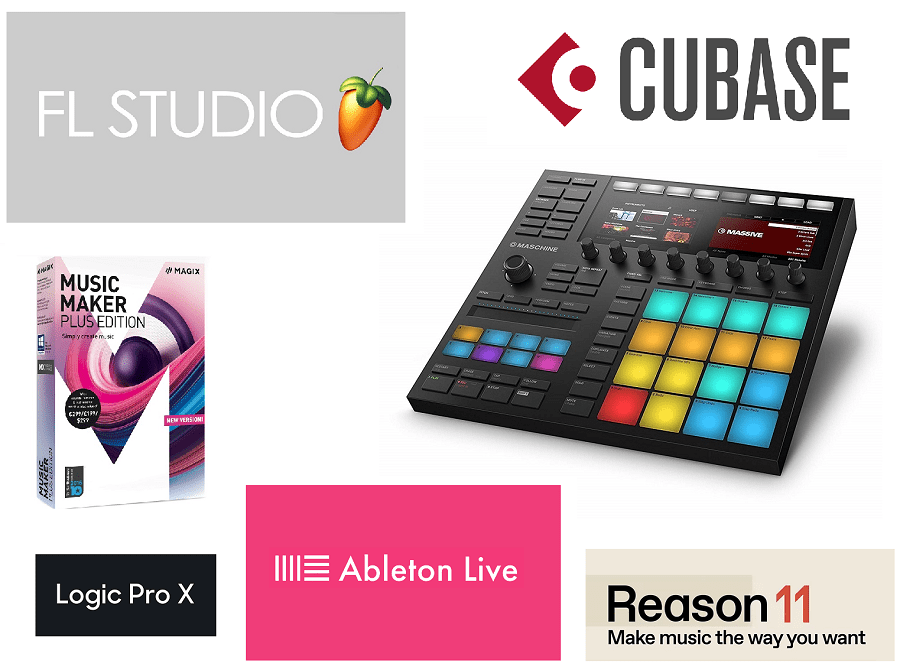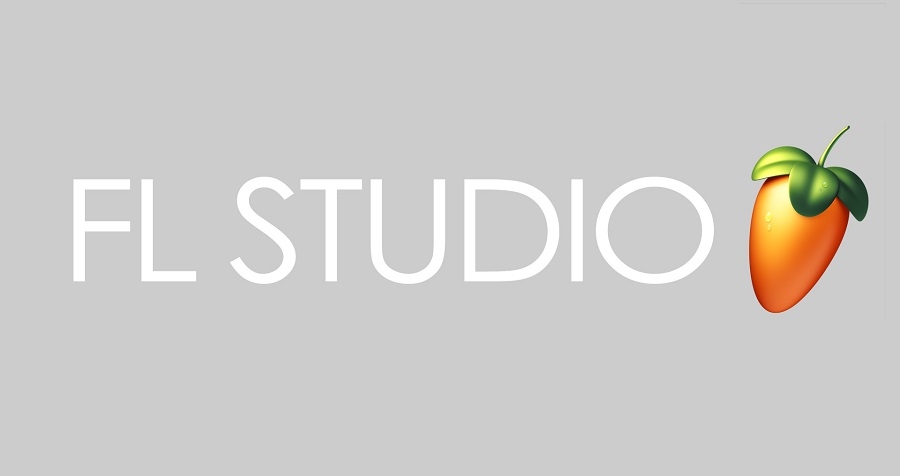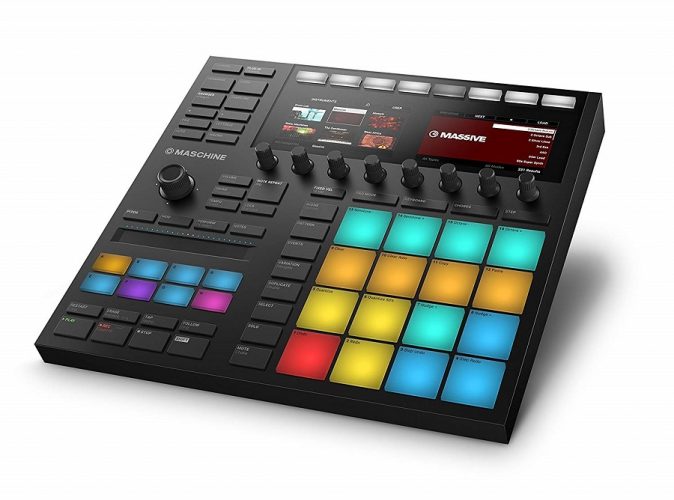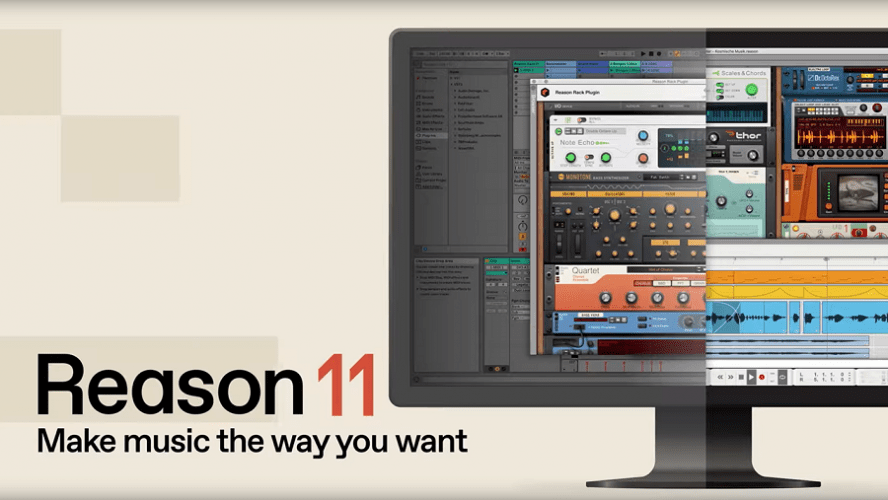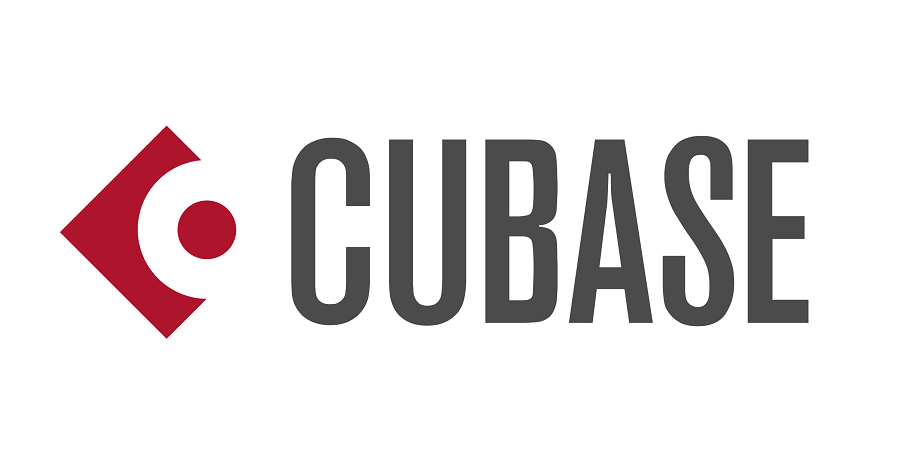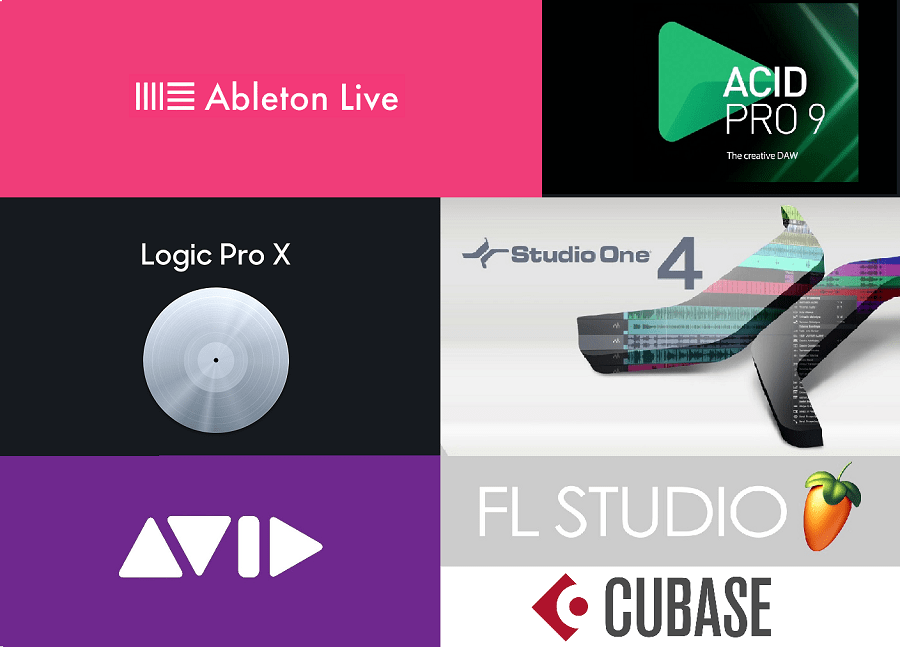The rise of home studio software has made it possible for anyone to create studio-quality music from the comfort of their bedrooms. This is really remarkable because the power has finally been transferred to the regular person.
With the right software, nothing can stop you from exercising your creativity. As a plus, you can turn your beat-making skills into your source of income by selling your beats online!
If this is something you would like to explore, here is a list of the 7 best beat-making software you can use today:
Magix Music Maker
Magix Music Maker was designed by Magix as a music editing program. The first version was published back in 1994.
In case you don’t know, Magix is a German consumer software solutions development company. They develop software solutions for video editing, audio editing, DAWs, and photo editing software.
The company was acquired by Capiton, a private equity firm, in May 2018. It is now under the management of Klaus Schmidt, Aishvarya Agarwal, and Jörg Stüber.
Music Maker is a DAW by Magic that comes as an easy to use music production suite. It comes with a huge array of loops, tracks, effects, and tools, allowing you to craft high-quality beats at the comfort of your computer.
Over the years, it has metamorphosized a lot, with many features being added along the way. Today, it is a very user-friendly platform that is easy to create music with. It uses program attributes from Samplitude, another one of Magix’s DAWs.
It has a very powerful yet intuitive interface, which is why it is so popular with beginner beatmakers and professionals alike. Magix Music Maker has sold over a million copies and has become Europe’s most successful music editing program.
This platform gives you the opportunity to turn those musical ideas you have to reality as quickly and as easily as possible. It allows you to combine sounds and loops, add software instruments, then drag and drop to apply effects.
The beauty of it is that it is so simple to use, and it even allows you to embellish your beats with vocals and rap.
For Magix to work on your device, it must meet the following minimum system requirements:
- A 2 GHz processor or higher
- 1 GB RAM or higher
- 4.2 GB of hard disk drive space
- Graphics card with a min resolution 1026×768
To get started with it, all you have to do is download the software to your computer, then load it up and get right to creating. Magix Music Maker works in 3 ways:
- Combine sounds and loops
It makes creating your beats very easy even for someone with zero previous experience. Take advantage of its drag and drop function to combine sounds and loops from a massive selection of elements.
- Play and record
Once you have a beat going, simply throw in your melodies, drum grooves or even vocals. You can use the virtual elements or embellish it with your own recordings. Simply connect a MIDI keyboard or microphone and get it done.
- Create your sound
Add a unique touch to your creation by using effects, loops, melodies, and vocals. This will make your beat stand out even more.
Key features
Make beats from scratch
Music Maker gives you the ability to craft awesome beats from thin air. As long as you have the software, you are good to go. It is a very easy to use and intuitive platform, meaning that even with zero previous experience you can start experimenting and in no time at all come up with something that really pops.
Magix Soundpools
The soundpools you get when you install it have hundreds of sounds and loops that you can combine in whatever way you want to come up with unique beats. This allows you to build beats in seconds.
Soundpool collections
Soundpool collections contain several soundpools. With each soundpool containing hundreds of sounds and loops for you to use, crafting something unique is really easy when using this platform. With the drag and drop feature, you can come up with beats that reflect your style, and even blend in some melodies, vocal passages, and rap lines.
Software instruments
As long as you have a mouse or a standard or a MIDI keyboard, you can create awesome beats and control Music Maker’s software instruments, giving every beat a characteristic flair.
Other features:
With Magix Music Maker, you get more customization options than ever before.
This platform stands out because it lets you basically build your own version and populate it with the content you want. It lets you pick the soundpools you like, the instruments you need, and the functions and effects you think will be essential to your beat making process.
In a way, this means that the resulting program you will end up using will be unique to you and your working process. You get to build your own Magix Music Maker with the components that matter to you.
Pricing
It is available to try for free. The free version comes with 425 free sounds and loops, 4 free additional Soundloops, 3 free instruments, 8 free effects, multicore support, and 8 tracks.
Magix Music Maker Plus Edition is available for $59. It comes with all the free Music Maker content, along with more sounds, features, and instruments. It also comes with 1 Soundpool collection plus 1 soundpool of your choice. You also get 3 instruments, 1 Tiny instrument of your choice, and 4 feature packs worth $40.
Magix Music Maker Premium is available for $79. It comes with all free Music Maker content, more sounds, features, and instruments, and 1 soundpool collection plus 3 soundpools of your choice. You also get 6 instruments and 2 Tiny instruments of your choice. Finally, you get 9 feature packs worth $90, along with iZotope Ozone 8 elements, 2 coreFX Bundles, and Sound Forge Audio Studio 12. For a limited time, Samplitude Music Studio 2019 will also be thrown into the mix.
Pros
- Very easy to get started with it and to use it.
- It is very customizable, letting you take advantage of the components you want
- Comes with multicore support for large scale projects
- Gives you access to unlimited soundpools, instruments, and functions
- There is a free version, which means you can try it out for yourself first without any commitment to see whether it is something you’ll like
- It has a massive loop library
Cons
- The drum plugins do not sound that great
- It lacks several audio restoration tools that other DAWs have
- Comes with a limited amount of insert and send effects for audio tracks
FL Studio
FL Studio is a DAW that was developed by Image-Line, a Belgian software company. It is a complete DAW designed to cater to all your music production and beat making needs. With over 20 years of innovation, it contains some of the most sought after audio production tools today.
The initial release date was December 18, 1997. Back then, it was known as Fruity Loops. The first version of Fruity Loops was developed by Didier Dambrin.
Since then, it has undergone a series of updates and feature improvements, which is why it has become one of the most popular and complex DAWs today.
FL Studio has a graphical UI based on a pattern-based music sequencer. There are four versions of the program for Windows and macOS, including Fruity Edition, Producer Edition, Signature Bundle, and the All Plugins Bundle.
You can use it in 3 different modes:
- Step Mode- This is the plug and play mode. Here you’ll get to create patterns and sequence in seconds.
- Note Mode- You can use this mode to add melodies and harmony to your production
- Drum Mode- This mode takes creativity to the next level. Has MPC-style 16 or 32 pad layouts.
FL Studio will work with the following minimum requirements:
- 2 GHz Intel Pentium 4
- Windows 7 or later/ macOS 10.11 or later
- Minimum 4GB RAM
Key features
The best in beat making capabilities
This platform gives you the opportunity to create beats to the highest professional standards. It comes packed with all the features you would need to create complex productions, including a series of effects chains, audio sends, sidechain control, and advanced automation.
Piano Roll
FL Studio’s piano roll is arguably the best in the industry. Sequencing with it is easy, and it comes with a large number of additional tools. Laying your beat’s basic structure on this piano roll will be a wonderful experience.
Comes with over 80 plugins
If you want to explore the limits of your creativity, FL Studio can help you do exactly that. With over 80 instrument and effect plugins, you will be spoilt for choice. This means you can easily create your beats in any number of styles.
Pricing
FL Studio has four editions. To get one, all you have to do is make a one time purchase. All future updates will be done for free. Here are the various editions and their price tags:
- Fruity Edition: $99- You get basic melody and loops creation.
- Producer Edition: $199- You get full song creation and audio recording options
- Signature Bundle: $299- You get full song creation, audio recording options, and extra plugins
- All Plugins Bundle: $899- You get complete access all unlocked
Pros
- After the one-time purchase, you get all future updates for free.
- It can be used as a VST plugin in another VST host
- It has a huge array of native instruments and effects
- It has really great MIDI controller integration.
- It is surprisingly lightweight and stable for the amount of power it packs
Cons
- It has a very steep learning curve
- There are so many options available, it is very easy to become disorganized
- It does not have the best console integration
- It does not have audio quantization, a feature that almost all other DAWs come with
Ableton Live
Ableton Live is a music sequencer and DAW for macOS and Windows. It is owned by Ableton, a Berlin-based music software company. The company was founded in 1999 by Gerhard Behles, Robert Henke, and Bernd Roggendorf.
Live was first released as a commercial software in 2001. The latest stable version of the software was released as Ableton Live 10.1 on 28th May 2019.
This software stands out because it is more than just a simple DAW. It is designed to be an instrument for live performances as well as for composing, arranging, mixing and recording.
It is popular with many DJs because it comes with tools and controls for beatmatching and crossfading, something that can take your beats to a whole other level. It was actually one of the first DAWs to offer automatic beatmatching for songs.
Ableton Live is fast, fluid, and flexible. It comes packed with effects, instruments, sounds, among other creative features, making it everything you will ever need to create those awesome beats in one simple location.
For Ableton Live to work on your device, you need the following minimum requirements:
- Windows 7 or higher/ MacOS X 10.11.6 or later
- 4 GB RAM or higher
- 1366×768 display resolution
- 3 GB disk space for basic installation, up to 76GB for additional available content
Key features
Ableton Live comes packed with several features that will help you take your beat-making process to the next level.
Impressive beat creating capabilities
It was one of the first DAWs to offer automatic beatmatching for songs. It has built upon that innovation by offering several other features and functions that make it possible to create amazing beats with ease. It allows you to arrange your layers fluidly than any other DAW out there, making your music creation process more enjoyable and fun.
Intuitive workflow
Live has a series of interesting features that make it very intuitive to use. For example, with the Capture MIDI feature, all you have to do is press the Capture MIDI button when you hear something you like. The program will then capture your idea and play it back to you without having to press record. You can even add new parts to the track or overdub it.
This is perfect for beatmakers who have a spontaneous workflow process, where great ideas strike them out of nowhere leaving them with almost no time to record it.
More sound personalization options
With Ableton Live, you have access to a massive collection of devices that you can use to shape your sound. From impressive effects to loops to tools like extensions and time tested devices like modulators, you will be spoilt for choice when you see just how much this platform allows you to achieve.
Ableton Push and Max for Live
It seamlessly integrates with these two other softwares, broadening your horizons even more. You can do even more away from your computer, take advantage of a highly curated library of sounds, and the unlimited potential of Max for Live. And it is all seamlessly built-in.
Pricing
Ableton Live 10 comes in three editions:
- Intro- $99. Here you get basic essentials. You also get 155 sounds, 4 software instruments, 21 audio effects, and 8 MIDI effects.
- Standard- $449. This option gives you full features plus extras. You also get 1800 sounds, 5 software instruments, 34 audio effects, and 8 MIDI effects.
- Suite- $749. This gets you a complete integrated studio. You also get 5000+ sounds, 15 software instruments, 55 audio effects, and 17 MIDI effects.
Pros
- It is packed with a lot of features that allow you to experiment with your beat-making
- It has a very quick MIDI control setup, with general presets existing for popular hardware.
- The session view is loop-oriented, which makes live-looping your beats really fun
- The synthesizers and effects are very CPU-friendly and efficient
- Really good tutorials and manual
- It has a massive and very helpful community for when you get stuck
Cons
- It can be very expensive especially when compared to other similarly capable DAWs
- It ties you down to the bars and beats pattern, which somehow limits your creativity
- There is no system for recording multiple takes
- It is a little behind when it comes to what some other DAWs available today are capable of.
Native Instruments Maschine MK3
Maschine MK3 is a hardware/software DAW combo that was developed by Native Instruments. It was first released on April 1, 2009, and came as a hardware component plus the first iteration of the software.
Native Instruments Maschine MK3 is basically a hardware controller that comes with its own sequencing software. The software can be installed on any compatible device, allowing you to use it in conjunction with any other DAW.
It comes as a bundle, including a software license and the hardware. The two parts of the bundle are not sold separately.
The system requirements for Maschine MK3 are:
- Windows 7 and up/ macOS 10.12 and up
- 4GB RAM
- Intel Core i5 and up
- 13GB free disk space
Key features
A revolutionary approach to beat making
Native Instruments Maschine MK3 is more than just a simple DAW. It combines the raw power of a high-quality DAW with its hardware capabilities, allowing you to create your beats in a whole new way. With this efficient tool, you will discover new ways to play, and you will absolutely love the beats you end up coming up with because it literally frees your creativity in every possible way.
Bigger Pads
Maschine MK3 has bigger pads that allow you to perform more complex moves like flams and rolls. They are also more sensitive to lighter touches, allowing you to be more expressive as you play.
Full color and HI-Res screens
It comes with two full-color displays. This will allow you to easily browse sounds, FXs, plug-ins, and instruments. All you have to do is find the thumbnail you are looking for then load it directly from the hardware to use it.
Studio-Grade Audio Interface
It comes with a 96kHz/24-bit audio interface that will allow you to create your beats in pristine sound. You can even add in a dynamic mic for quick sampling. Plus, the fact that it is USB powered means that you can record anywhere with your laptop.
Faster Workflow
Maschine MK3 has been improved to allow for even faster workflow. All the buttons that beatmakers love to use most have been made even more easily accessible.
This means you can do almost anything directly with just a single touch.
Pricing
There are two Maschine production and performance products:
- Maschine MK3, retailing at $649. This tool will allow you to create your beats in a fast, intuitive, and fun new way.
- Maschine Mikro MK3, retailing at $269. A smaller version of the MK3, it is a compact beat-making companion.
Pros
- It can be used as a stand-alone VST RTAS
- It is very user-friendly, easy to set up and get to work
- It allows for a very efficient workflow process
- It is a very impressive instrument for the price
Cons
- It does not come with multicore support
- You cannot set it up for dual display, for example, if you want your scene page on one screen and your MIDI sampler on another
- The GUI stays the same color
Reason 11
Reason is a DAW created by Reason Studios. Reason Studios, which was formerly known as Propellerhead Software, is a Swedish software company.
The first version of the software was released on November 22, 2000. The release of the 10th version was announced 7 years later, on Septemeber 22, 2017. Two years later, on September 25, 2019, the latest version, Reason 11, was released. This version also introduced the new Reason Rack Plugin, which makes it possible to use Reason 11 as a plugin in other DAW.
It is a powerful DAW that stands out because of its unique interface and design. Developed by the Swedish company, Reason Studios. Until quite recently, Reason Studios was called Propellerhead Software.
It is a well-established DAW that only keeps getting better, maturing consistently while never forgetting what its users love about it.
To use Reason 11, you need to be running either Windows 7 or later or Mac OS X 10.11 or later. You will also need at least 4 GB RAM and 4GB disk space. The program may use an additional 20 GB scratch disk space.
Key features
Reason Rack Plugin
If you have a different favorite DAW, you can harness Reason 11’s capabilities in it by installing the Reason Rack Plugin. This will allow you to bring Reason 11’s synths, instruments, effects and sounds into any DAW you want.
Impressive Workflow features
Reason 11 is packed full of features that are designed to make your workflow as seamless as possible. Features like curved automation for drawing smooth curves, audio clip crossfades for creating crossfades, and the ability to mute and unmute separate MIDI notes will make your life a lot easier as you create your beats.
Collection of high-quality devices
It has several devices that you can use to spice up your beats with. From the legendary channel EQ that has been featured in many platinum recordings to the trusty ready-for-radio compressor, you will have everything you need all under one roof with this DAW.
Pricing
Reason 11 has a free 30-day trial. The trial does not have any feature restrictions whatsoever, so you get to experience everything that Reason 11 is capable of before actually buying it.
It comes in 3 versions. Reason Intro costs $99, Reason 11 costs $399, and Reason 11 Suite costs $599.
Pros
- It features a collection of tools that make your creations radio-ready
- The instruments and effects really shine, especially in plugin form
- Scenic sounds good and is very easy to use
- It has a very versatile array of bundled instruments
- It has a massive collection of very useful sound sets that will instantly inspire new beats out of you
Cons
- It has a limited number of equalizers on the mixer
- The plugin is currently only VST3
- There are no free upgrades
Logic Pro
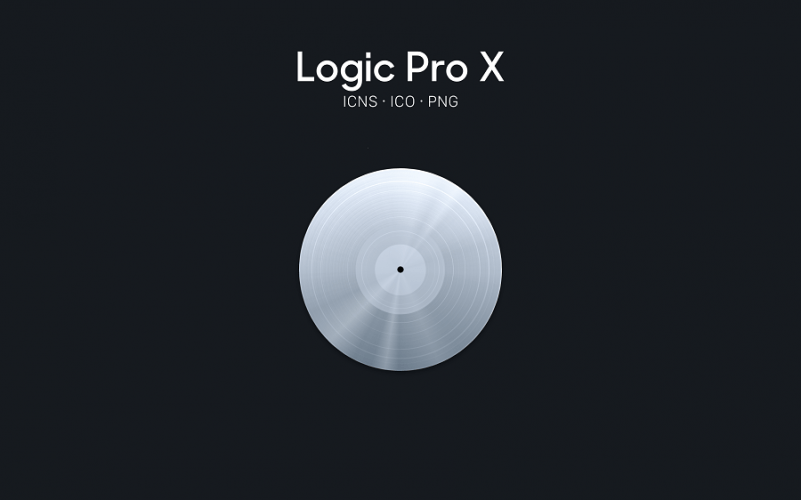
Logic Pro is a DAW for the macOS platform. It was initially created as a multi-platform product in 1993 by C-Lab, a German software development firm. Back then it was called Notator Logic.
C-Lab later changed its name to Emagic, after which Apple bought it in 2002. The name was changed to Logic Pro shortly after.
Today, it is the second most popular DAW in the world.
It is compatible with a macOS 10.13.6 computer or later. It needs a 64-bit processor and at least 1.5 GB of space.
Key features
Raw beat-making power for Mac users
There is a reason why Logic Pro is the second most popular DAW in the world. It is basically a complete recording studio in your computer. This means it has so much to offer in the way of streamlining your music creation process. Packed with impressive features, and extensive sound library, and pretty solid support, there is little to complain about it.
Apple Loops
Logic Pro supports Apple Loops, a massive collection of royalty-free professionally recorded instrumental loops.
Advanced MIDI editing
This feature is another thing that makes Logic Pro stand out. Through Logic Pro’s MIDI Transform Window, you can edit the velocity, pitch, pitch bends, and effect humanize and precise note positioning.
Other features:
With Logic Pro, you get a host of other interesting features, including real-time scoring for musical notation, up to 255 audio tracks, and support for a large number of MIDI keyboards and control surfaces.
Pricing
Logic Pro X retails at $199.99.
Pros
- It has one of the best virtual instrument libraries of any DAW
- It is quite easy to get the hang of it
- It is a really powerful DAW, especially when it comes to creating beats
- It is possible to use third-party virtual instruments and plugins with it
Cons
- No Windows support
- It only works with Apple-friendly plugins
Cubase
Cubase is a DAW developed by Steinberg, a German music software and hardware company.
Today, you can find cut-down versions of Cubase in a lot of Yamaha’s audio and MIDI hardware. You can even upgrade these versions to an advanced version at a discount.
The first version of Cubase was released in 1989. Since then, it has had a lot of upgrades, evolving into the powerhouse it is today.
Key features
Impressive beat making capabilities
This award-winning software will take your beat making workflow to a whole other level. With warp quantizing options unlike any other, along with advanced channel strip modules, chord pads, and comping capabilities, every beat you make will be the best-sounding version of itself.
Next-generation audio engine
Cubase has one of the best audio engines in the industry. It features a crystal-clear 64-bit floating-point resolution at a 192 kHz sample rate, which delivers amazing sound quality. Plus, it comes with true surround sound capability, with each track offering up to 6 channels for 5.1 surround mixes.
The MixConsole
Cubase’s MixConsole is exceptional in many ways. It is designed for ease of use and looks and feels like a high-end analog console. Plus, it sounds amazing and features a full-screen mode, customizable icons, and drag and drop support.
The Sampler Track
Beatmakers absolutely love this feature. It is a creative tool that inspires even more creativity. All you have to do is sample a piece of audio using it, then manipulate it however you like to come up with your own unique sounds.
To make things even better, there is a dedicated sample library with Caleidoscope, which contains hundreds of samples and presets. All these will work together to help you get started immediately you load up the program.
Pricing
It comes in three versions:
- Cubase Elements- ideal for home musicians, costs € 99.99
- Cubase Artist- ideal for professional studios, costs € 309.00
- Cubase Pro- ideal for larger businesses and operations, costs € 559.00
Pros
- It has one of the slickest, fasted, most customizable interfaces
- Comes with professional-sounding virtual instruments
- It is a very powerful beat-making platform that allows you to do quite a lot with your music
- The audio engine is unbeatable
Cons
- The UI is a bit hard to work with for beginners
- It feels like there are too many ways to do the same thing when using this software, something that makes some features seem redundant
- Cubase Elements limits you to 48 tracks
- It has a very steep learning curve
Verdict
That ends this list of the very best beat making software in the business. They all have their strengths and weaknesses, so you have to curate each one of them and decide which features you like and which features you can live without.
Whatever you decide to go with, any software on this list is guaranteed to take your beat making to a whole other level. Your creations will sound more professional than ever before, you might even surprise yourself.
